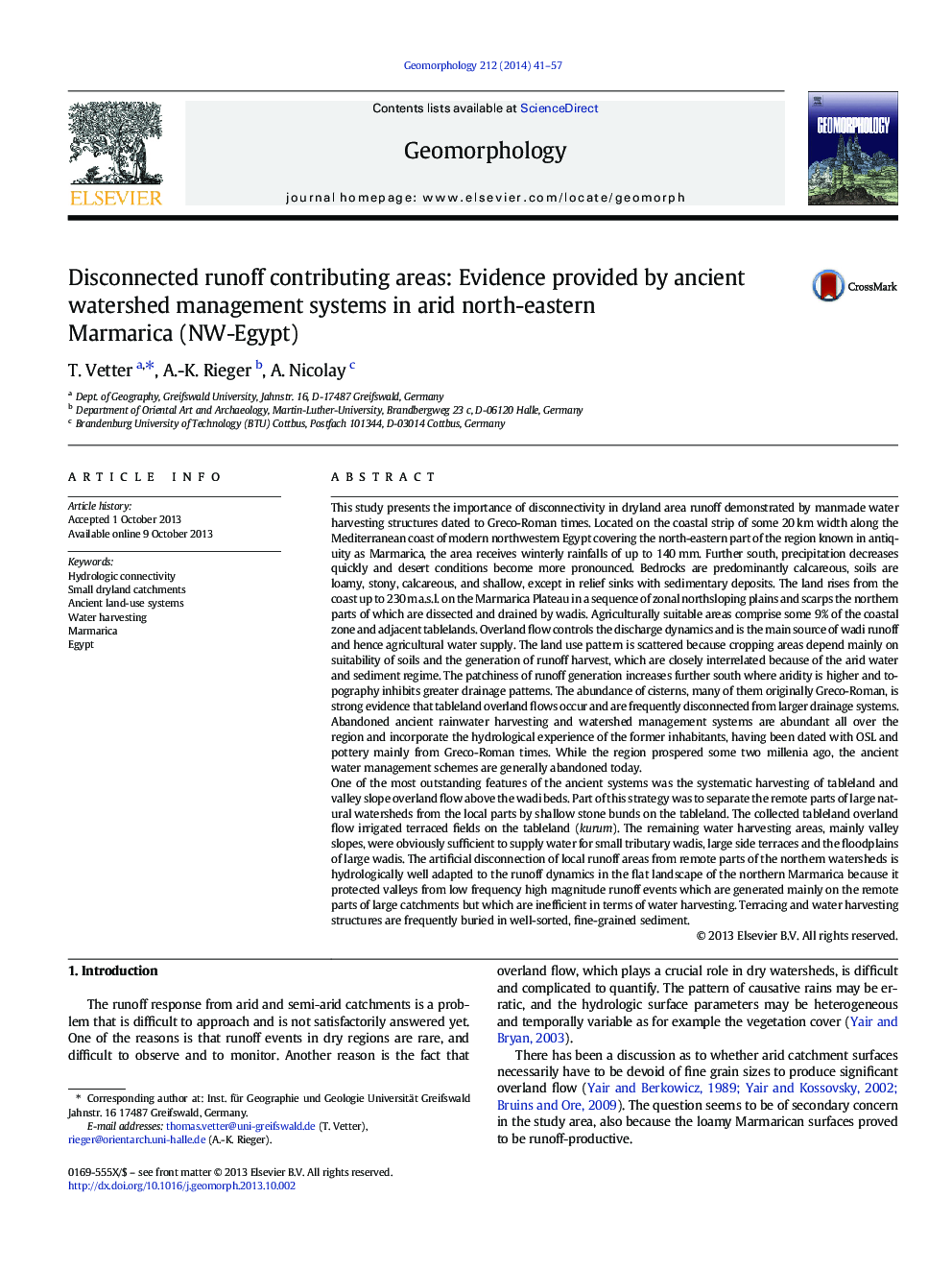| کد مقاله | کد نشریه | سال انتشار | مقاله انگلیسی | نسخه تمام متن |
|---|---|---|---|---|
| 4684543 | 1635437 | 2014 | 17 صفحه PDF | دانلود رایگان |

• Analyses ancient water harvesting management based on actual data and observations.
• Outlines disconnected sub-watersheds as an instrument of ancient water management.
• Introduces tableland fields and lateral wadi terraces as water harvesting structures.
• Combines approaches of landscape archaeology and dryland catchment hydrology.
This study presents the importance of disconnectivity in dryland area runoff demonstrated by manmade water harvesting structures dated to Greco-Roman times. Located on the coastal strip of some 20 km width along the Mediterranean coast of modern northwestern Egypt covering the north-eastern part of the region known in antiquity as Marmarica, the area receives winterly rainfalls of up to 140 mm. Further south, precipitation decreases quickly and desert conditions become more pronounced. Bedrocks are predominantly calcareous, soils are loamy, stony, calcareous, and shallow, except in relief sinks with sedimentary deposits. The land rises from the coast up to 230 m a.s.l. on the Marmarica Plateau in a sequence of zonal northsloping plains and scarps the northern parts of which are dissected and drained by wadis. Agriculturally suitable areas comprise some 9% of the coastal zone and adjacent tablelands. Overland flow controls the discharge dynamics and is the main source of wadi runoff and hence agricultural water supply. The land use pattern is scattered because cropping areas depend mainly on suitability of soils and the generation of runoff harvest, which are closely interrelated because of the arid water and sediment regime. The patchiness of runoff generation increases further south where aridity is higher and topography inhibits greater drainage patterns. The abundance of cisterns, many of them originally Greco-Roman, is strong evidence that tableland overland flows occur and are frequently disconnected from larger drainage systems.Abandoned ancient rainwater harvesting and watershed management systems are abundant all over the region and incorporate the hydrological experience of the former inhabitants, having been dated with OSL and pottery mainly from Greco-Roman times. While the region prospered some two millenia ago, the ancient water management schemes are generally abandoned today.One of the most outstanding features of the ancient systems was the systematic harvesting of tableland and valley slope overland flow above the wadi beds. Part of this strategy was to separate the remote parts of large natural watersheds from the local parts by shallow stone bunds on the tableland. The collected tableland overland flow irrigated terraced fields on the tableland (kurum). The remaining water harvesting areas, mainly valley slopes, were obviously sufficient to supply water for small tributary wadis, large side terraces and the floodplains of large wadis. The artificial disconnection of local runoff areas from remote parts of the northern watersheds is hydrologically well adapted to the runoff dynamics in the flat landscape of the northern Marmarica because it protected valleys from low frequency high magnitude runoff events which are generated mainly on the remote parts of large catchments but which are inefficient in terms of water harvesting. Terracing and water harvesting structures are frequently buried in well-sorted, fine-grained sediment.
Journal: Geomorphology - Volume 212, 1 May 2014, Pages 41–57